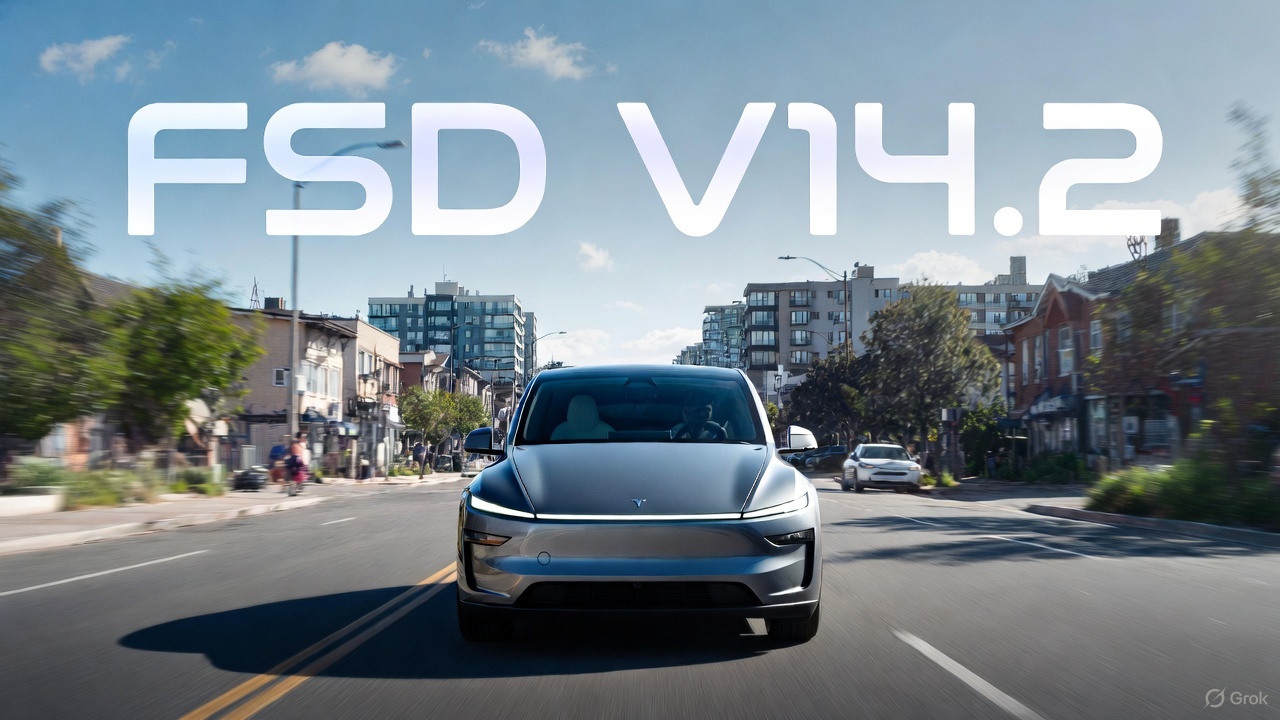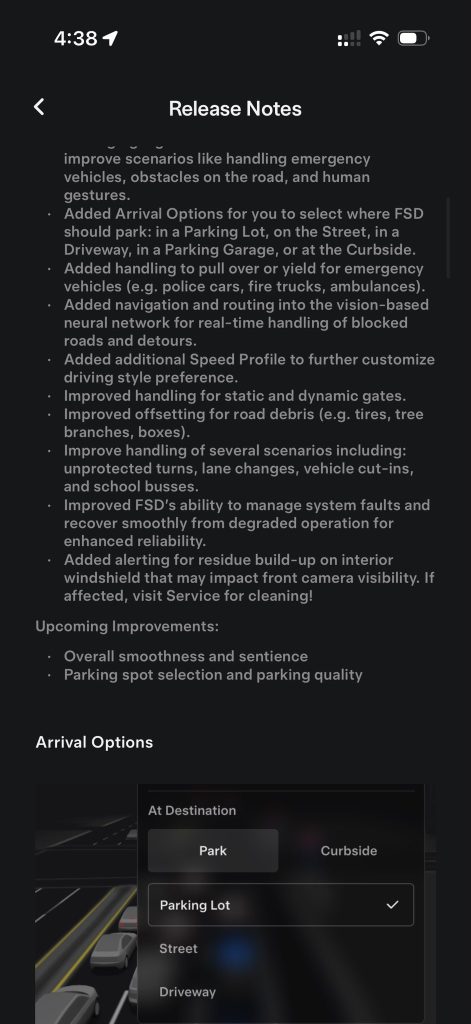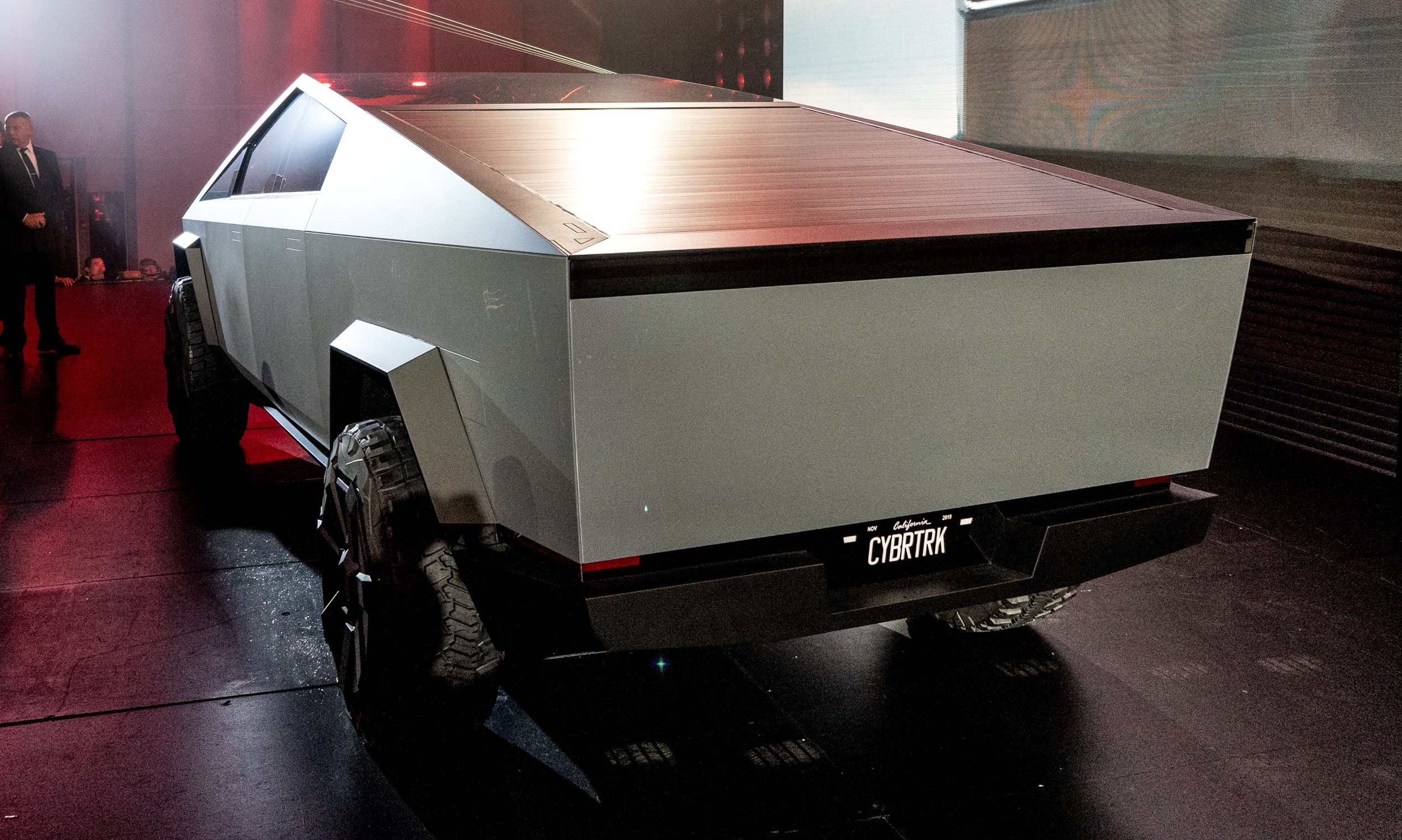The Tesla Cybertruck’s many features are now appearing as patents that the automaker has submitted to the United States Patent Office, and one of the most notable is the tonneau, or truck bed cover. While the retractable design of the tonneau provides convenience at the touch of a button for owners, it will protect any goods or cargo that drivers will store in the Cybertruck’s massive bed. However, the design is now hinting toward even more versatility and usefulness as the patent describes the potential use as a solar panel that will provide range for the all-electric truck by capturing the sun’s energy.
In Tesla’s newly published “Integrated Tonneau Cover for a Vehicle” patent, several inventors submit their idea and designs for the Cybertruck’s fully mechanical tonneau cover. Guided along a set of channels in the bed of the truck, the tonneau cover will provide protection for any cargo that is stored in the back of the vehicle. Whether it be tools or luggage, the tonneau cover is Tesla’s way of giving owners a way to protect their belongings without having to purchase expensive aftermarket bed covers, which other trucks do not provide. The retractable tonneau is shown in the images below.
Credit: US Patent Office
“In order to mitigate the possibility of such damage, many truck owners install aftermarket truck bed covers that cover the bed of their truck,” the patent states. “However, not only may such aftermarket truck bed covers be difficult to install, they also may not fit exactly with the specifications of the truck beds of different models of trucks. If a truck bed cover does not have an accurate fit it can leak rain or snow through the gaps between the truck bed cover and the walls around the truck bed, and cause cargo damage. In addition, not only are many aftermarket truck bed covers difficult to install and inconvenient to use, but they also take up space in the truck beds and reduce the overall utility of the trucks.”
The tonneau, in a revolutionary new design, will also be able to recharge the vehicle’s battery pack thanks to 110 solar electric cells that are electrically connected to a photovoltaic charging system and battery. “When the tonneau cover is deployed to cover the bed and the solar electric cells that make up the slats are facing the sun, the battery within the electric vehicle can be charged by solar electric cells,” the patent states.
While solar panels on an electric vehicle have been looked at as a possibility in the past, the idea has never come to fruition due to ineffectiveness. Because a car doesn’t provide much surface area, to begin with, the contribution of charge from solar panels would be minimal, and it would require extremely clear and favorable weather conditions to provide any effective additional range to the vehicle. However, CEO Elon Musk hinted just days after the Cybertruck’s unveiling event in November 2019 that Tesla would be adding an option to add solar power that could generate up to 15 miles per day. Musk also hinted toward “fold-out solar wings” that could generate an additional 30-40 miles per day, which could alleviate the need to stop at a Supercharger for some owners.
Will be an option to add solar power that generates 15 miles per day, possibly more. Would love this to be self-powered. Adding fold out solar wings would generate 30 to 40 miles per day. Avg miles per day in US is 30.
— Elon Musk (@elonmusk) November 22, 2019
The tonneau would be completely covered in solar electric cells, and the patent claims that when the “truck bed cover is in a closed position, it is configured to recharge the battery pack, the closed position of the truck bed cover enabling the plurality of solar electric cells to face a sun.”
Musk also hinted toward the possibility of installing solar cells on the roof of a potential Tesla van with Joe Rogan in a podcast interview earlier this year. Musk said that the van would be a favorable design due to its “big, flat area,” and “solar could start to make a little more sense.” Because the tonneau is flat and covers a considerable surface area, there is some potential for it to be just as effective as Musk’s idea for the van.
The full patent document is available below.
Tesla Cybertruck Tonneau Solar Patent by Joey Klender on Scribd

Elon Musk
SpaceX Starship Version 3 booster crumples in early testing
Photos of the incident’s aftermath suggest that Booster 18 will likely be retired.

SpaceX’s new Starship first-stage booster, Booster 18, suffered major damage early Friday during its first round of testing in Starbase, Texas, just one day after rolling out of the factory.
Based on videos of the incident, the lower section of the rocket booster appeared to crumple during a pressurization test. Photos of the incident’s aftermath suggest that Booster 18 will likely be retired.
Booster test failure
SpaceX began structural and propellant-system verification tests on Booster 18 Thursday night at the Massey’s Test Site, only a few miles from Starbase’s production facilities, as noted in an Ars Technica report. At 4:04 a.m. CT on Friday, a livestream from LabPadre Space captured the booster’s lower half experiencing a sudden destructive event around its liquid oxygen tank section. Post-incident images, shared on X by @StarshipGazer, showed notable deformation in the booster’s lower structure.
Neither SpaceX nor Elon Musk had commented as of Friday morning, but the vehicle’s condition suggests it is likely a complete loss. This is quite unfortunate, as Booster 18 is already part of the Starship V3 program, which includes design fixes and upgrades intended to improve reliability. While SpaceX maintains a rather rapid Starship production line in Starbase, Booster 18 was generally expected to validate the improvements implemented in the V3 program.
Tight deadlines
SpaceX needs Starship boosters and upper stages to begin demonstrating rapid reuse, tower catches, and early operational Starlink missions over the next two years. More critically, NASA’s Artemis program depends on an on-orbit refueling test in the second half of 2026, a requirement for the vehicle’s expected crewed lunar landing around 2028.
While SpaceX is known for diagnosing failures quickly and returning to testing at unmatched speed, losing the newest-generation booster at the very start of its campaign highlights the immense challenge involved in scaling Starship into a reliable, high-cadence launch system. SpaceX, however, is known for getting things done quickly, so it would not be a surprise if the company manages to figure out what happened to Booster 18 in the near future.
News
Tesla FSD (Supervised) is about to go on “widespread” release
In a comment last October, Elon Musk stated that FSD V14.2 is “for widespread use.”

Tesla has begun rolling out Full Self-Driving (Supervised) V14.2, and with this, the wide release of the system could very well begin.
The update introduces a new high-resolution vision encoder, expanded emergency-vehicle handling, smarter routing, new parking options, and more refined driving behavior, among other improvements.
FSD V14.2 improvements
FSD (Supervised) V14.2’s release notes highlight a fully upgraded neural-network vision encoder capable of reading higher-resolution features, giving the system improved awareness of emergency vehicles, road obstacles, and even human gestures. Tesla also expanded its emergency-vehicle protocols, adding controlled pull-overs and yielding behavior for police cars, fire trucks, and ambulances, among others.
A deeper integration of navigation and routing into the vision network now allows the system to respond to blocked roads or detours in real time. The update also enhances decision-making in several complex scenarios, including unprotected turns, lane changes, vehicle cut-ins, and interactions with school buses. All in all, these improvements should help FSD (Supervised) V14.2 perform in a very smooth and comfortable manner.
Elon Musk’s predicted wide release
The significance of V14.2 grows when paired with Elon Musk’s comments from October. While responding to FSD tester AI DRIVR, who praised V14.1.2 for fixing “95% of indecisive lane changes and braking” and who noted that it was time for FSD to go on wide release, Musk stated that “14.2 for widespread use.”
FSD V14 has so far received a substantial amount of positive reviews from Tesla owners, many of whom have stated that the system now drives better than some human drivers as it is confident, cautious, and considerate at the same time. With V14.2 now rolling out, it remains to be seen if the update also makes it to the company’s wide FSD fleet, which is still populated by a large number of HW3 vehicles.
News
Tesla FSD V14.2 starts rolling out to initial batch of vehicles
It would likely only be a matter of time before FSD V14.2 videos are posted and shared on social media.

Tesla has begun pushing Full Self-Driving (Supervised) v14.2 to its initial batch of vehicles. The update was initially observed by Tesla owners and veteran FSD users on social media platform X on Friday.
So far, reports of the update have been shared by Model Y owners in California whose vehicles are equipped with the company’s AI4 hardware, though it would not be surprising if more Tesla owners across the country receive the update as well.
Based on the release notes of the update, key improvements in FSD V14.2 include a revamped neural network for better detection of emergency vehicles, obstacles, and human gestures, as well as options to select arrival spots.
It would likely only be a matter of time before FSD V14.2 videos are posted and shared on social media.
Following are the release notes of FSD (Supervised) V14.2, as shared on X by longtime FSD tester Whole Mars Catalog.


Release Notes
2025.38.9.5
Currently Installed
FSD (Supervised) v14.2
Full Self-Driving (Supervised) v14.2 includes:
- Upgraded the neural network vision encoder, leveraging higher resolution features to further improve scenarios like handling emergency vehicles, obstacles on the road, and human gestures.
- Added Arrival Options for you to select where FSD should park: in a Parking Lot, on the Street, in a Driveway, in a Parking Garage, or at the Curbside.
- Added handling to pull over or yield for emergency vehicles (e.g. police cars, fire trucks, ambulances.
- Added navigation and routing into the vision-based neural network for real-time handling of blocked roads and detours.
- Added additional Speed Profile to further customize driving style preference.
- Improved handling for static and dynamic gates.
- Improved offsetting for road debris (e.g. tires, tree branches, boxes).
- Improve handling of several scenarios including: unprotected turns, lane changes, vehicle cut-ins, and school busses.
- Improved FSD’s ability to manage system faults and improve scenarios like handling emergency vehicles, obstacles on the road, and human gestures.
- Added Arrival Options for you to select where FSD should park: in a Parking Lot, on the Street, in a Driveway, in a Parking Garage, or at the Curbside.
- Added handling to pull over or yield for emergency vehicles (e.g. police cars, fire trucks, ambulances).
- Added navigation and routing into the vision-based neural network for real-time handling of blocked roads and detours.
- Added additional Speed Profile to further customize driving style preference.
- Improved handling for static and dynamic gates.
- Improved offsetting for road debris (e.g. tires, tree branches, boxes).
- Improve handling of several scenarios, including unprotected turns, lane changes, vehicle cut-ins, and school buses.
- Improved FSD’s ability to manage system faults and recover smoothly from degraded operation for enhanced reliability.
- Added alerting for residue build-up on interior windshield that may impact front camera visibility. If affected, visit Service for cleaning!
Upcoming Improvements:
- Overall smoothness and sentience
- Parking spot selection and parking quality










